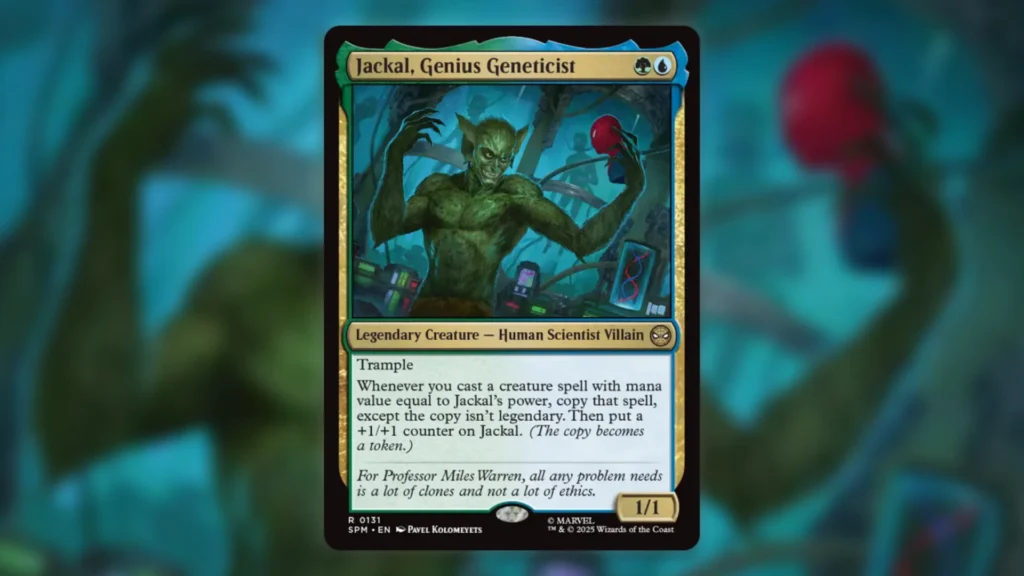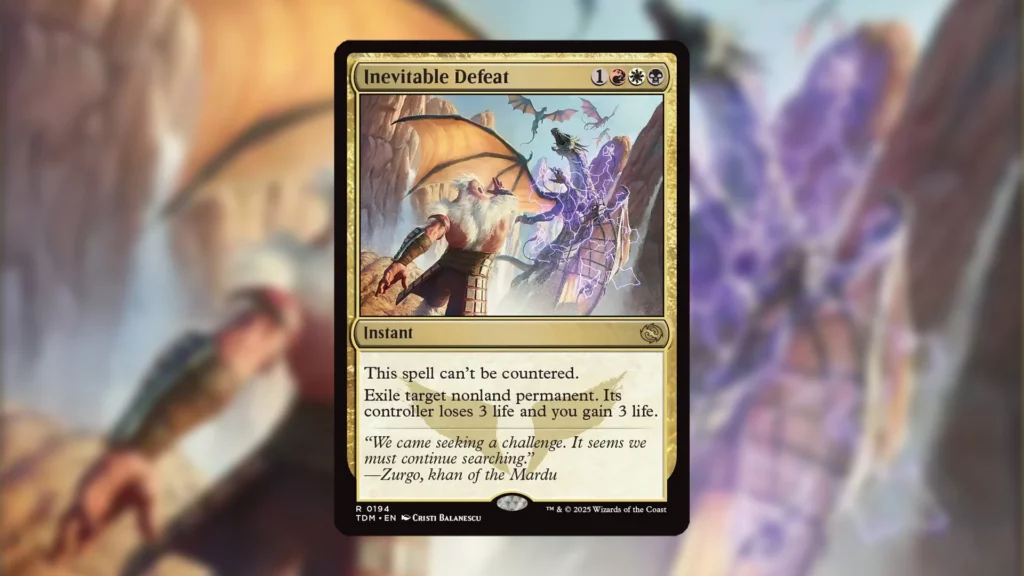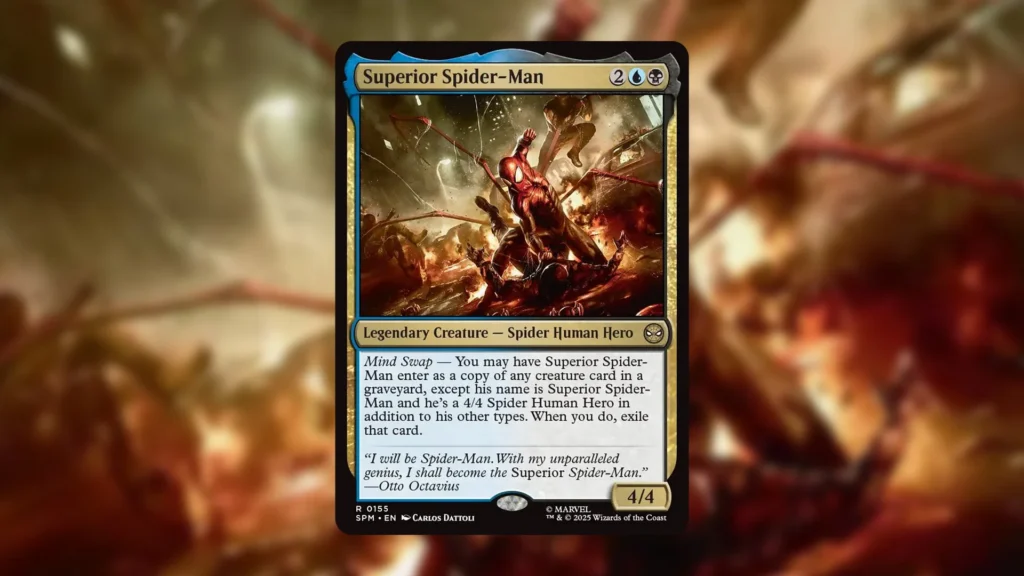In many player’s minds, Vivi Cauldron combo still haunts the halls of Standard. Until Wizards of the Coast comes in and purges the combo from existence, Standard is a dead format. A recent event, however, tells a different story.
This weekend, a 197-player Magic Online Super Qualifier took place. With MOCS points and four qualifications to the Regional Championship series on the line, many online Magic grinders brought their best game. While Vivi Cauldron did perform decently in the event as expected, it didn’t earn a single invite. Instead, three of the four invites were earned by rogue decks that many MTG players didn’t take seriously until now.
Simic Aggro Wins

Simic Aggro, a deck that’s been on the fringes of competitive Standard for a long time, took down the 197-player event. The deck has had some mediocre results lately with the new inclusion of Jackal, Genius Geneticist as a 4-of, but this recent result proves that Simic Aggro is the real deal.
While seeing this archetype succeed is rather strange, the decklist is pretty normal as far as this post-Spider Man archetype goes. One notably unusual inclusion is three main deck Surrak, Elusive Hunter. The card normally appears in the sideboard to combat control matchups with lots of spot removal, but the move to the main deck did this archetype a lot of service, especially because of how bizarre the winners’ metagame turned out. Moving Surrak to the main deck is already a decent idea due to Vivi Cauldron decks commonly running eight or more spot removal in the main to combat Mono Red, but a bizarre rise to control made this decision even better.
The sideboard used for this archetype is also a bit odd compared to average lists. Hard-Hitting Question is a notable oddity that generally only appears in Mono-Green Aggro decks. This gives the Simic Aggro list access to six different creature removal spells in the sideboard. The deck is running this over enchantment and artifact removal, suggesting that this Simic Aggro list is more interested in making sure creatures die before they get too big instead of removing the enabler pieces.
4-Color Control Finishes Second and Third

While seeing Simic Aggro take down an event is already bizarre enough, seeing two Four-Color Control decks in the top four, with the absence of Vivi Cauldron itself, is even stranger. It is very difficult to beat Vivi Cauldron in the long game, but it appears that these two MTG players have found ways to do it.
There are a few differences between the two lists, but these decks are looking to do the same thing: control the game in a Jeskai shell, splashing black to unlock the power of Inevitable Defeat. Against Vivi Cauldron, having an uncounterable omni-removal piece is incredibly valuable. The biggest threat on board can be an enchantment, artifact, or creature, and Inevitable Defeat makes sure whatever you need removed will leave play. It also makes your other selective removal more efficient since Inevitable Defeat can take care of whatever your other cards cannot.
While there are a lot of similarities between these lists, there are a few cards that suggest these control players were tech-ing for different matchups. Fire Magic appears in TSPJendrek’s second-place list as a lethal tool for go-wide aggressive decks. Sphinx of Forgotten Lore and Sphinx of the Forgotten Word appear in the same list as off-meta tools to completely dominate the control mirror.
Feitosa’s decklist offers one copy of Cursed Recording, which is particularly bizarre. A high-risk, high-reward gamble, Cursed Recording synergizes quite well in a deck with so many damage-based instants and sorceries. This card will essentially double your damage output, or removal output, when closing the game, making it unlikely that the card’s downside will come into play. Even if it does, there’s a chance you survive thanks to all the healing.
The last of the top four placings went to Dimir Midrange, a reminder that the deck is still a metagame contender.
Another Rogue Deck in the Top 8

Another massive surprise, an up-and-coming archetype also managed to secure a top-eight finish in this event. Bringer of the Last Gift combo is a Living End-style deck that uses Superior Spider-Man’s ability to enter as a copy of the namesake card in the graveyard. You can then wipe the board and reanimate your grave, ending the game on the spot.
While the combo that this deck offers is certainly powerful, this archetype’s success is even more shocking than the winning decks. Thanks to the prevalence of Vivi Cauldron, graveyard hate is everywhere. Worse yet, Agatha’s Soul Cauldron doubles as graveyard hate and a combo piece, meaning that facing targeted hate in the main deck is common.
This deck succeeded despite this, splashing a third color for some maindeck answers to the Cauldron, like Awaken the Honored Dead. This green splash also unlocked Town Greeter, a tool used to turbocharge the graveyard, while keeping your lands flowing. You also get access to Esper Origins, a card that doubles as a threat, card advantage, and a way to get cards into the graveyard all in one. These cards help glue the deck’s other elements together, making a surprisingly cohesive strategy.
Are Bans Still Needed?
Both of these rogue decks have been around for some time, but they have always been a step behind the likes of Vivi Cauldron and Dimir Midrange. Three rogue decks beating every Vivi Cauldron in the room is certainly a statement, and it could even suggest that a larger meta change is on the way.
While this is possible, I would personally doubt it. This MTGO event is a big deal for anyone trying to qualify for the MOCS, but for the majority of professional paper players, the rewards aren’t enough to entice them. In other words, the best Vivi Cauldron players in the world may not have even been in this tournament. No Pro Tour invites were on the line, only Regional Championship ones and points towards the MOCS leaderboard.
There’s a very strong chance that something from Vivi Cauldron will still kick the bucket in November. In the top 16 for this event, there were still six copies of Vivi Cauldron. Two of them fell in the top eight round, while the others didn’t quite make it.
All of that said, there were also an awful lot of control decks in the top 16. No one could really agree on a build, but four copies of various flavors of control can be found. Azorius Control is somewhat considered a metagame contender at this point, but there was only one Azorius Control deck among the four.
Bizarrely, Red only has one placement in the top 16, finishing 15th. This is widely considered to be the only other playable deck in current Standard, and it performed much worse than a variety of different rogue decks.
Put some higher stakes on the line, and I would fully expect Vivi Cauldron to show back up and take everything over. Even in this event, it’s not that Vivi Cauldron performed badly; it’s just that it was worse than expected. The good news for players everywhere is that this proves you don’t need to play Vivi Cauldron to be successful in Standard. It still gives you the best chance of winning, but there should be enough room to play whatever archetype you like, so long as you’re ok with giving some percentage points away.
Stick with us at mtgrocks.com: the best place for Magic: The Gathering coverage!

